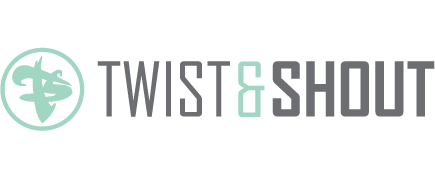
The corporate case study varies from uber-slick visuals and “coached-to-within-an-inch-of-their-lives” executive delivery, to (much more commonly) what I like to call “the hostage video”.
You’ve got an hour in the middle of an industrial business park with a senior executive, who has had the briefing notes from marketing 20 minutes prior to your arrival with the crew. Is it any wonder he seems hesitant and slightly stressed. He resorts to the media training someone organised for him when he was promoted five years ago, and becomes the automaton.
Whether it’s a customer or a senior product manager, I’m here to tell you that there is a better way, in the form of five top tips. Be warned, it gets a bit shouty…
1. Prepare with a telephone interview. This allows the director of the video (yes – you do need one if it’s important enough to invade an exec's daily routine) to get his head around the “argument”. What does the story sound like? What’s the point of the video. Make notes. Suggest questions. Identify an audience and an objective for Pete's sake. This will make for a much more comfortable interview on the shoot day and avoid the automaton syndrome.
2. Write open questions that make the interviewee have to think about the best way to answer. Some marketers dislike hesitant answers – but why? We are hearing an answer about a solution for the very first time, and that makes it special and new. AND authentic. By letting a realistic conversation take place we avoid the fake-ness that permeates most corporate interviews. And do NOT let them learn anything, even if you gave them a whole laundry list of issues to remember (which you should not have…for that I am stopping your pocket money for one week. You are so grounded, pal).
3. Stop this obsession with running time. You ask for a list of issues (we want to make the most of our time with the customer, right –and this means…er.. MORE, right?) but you set an arbitrary 2 minute length limit on the final edit. How can that possibly work? Listen to yourself. It’s a ridiculous contradiction. First of all – work on making it fascinating, so running time is less of an issue. Try to include another side to the story – such as the account manager perhaps, to add variety or perspective.
4. If you must get into a list, use smaller, benefit based questions to warm up (you might use the answers as individual clips in a PowerPoint presentation later) but make sure you get the distilled essence of why they chose you and your solution AS A STORY. Yes – with characters (your Key Account Manager, R&D people, Services?), a beginning (the market environment?), a middle (what that meant for their business) and an end (how you came in and saved the day, you super-hero, you…).
5. Make it look visually interesting. The office-based interview should be a last resort. We’ve used anything that’s nearby. Markets, art galleries, ice-cream shops, the street (complete with entertainers). In most cases these can me used as a metaphor (be careful how far you push this though – it can get fluffy and annoying). The incredible family-run coffee shop we used in this example embodies the spirit of the tech startup - which was perfect for this story. Walk and talk. Just get the blood pumping and the exec will be more human. What’s that – it’s harder for the crew? Well boo hoo. That’s what you’re paying them for.
Just look at the documentaries of Morgan Spurlock (“Supersize Me”) and Helen Walker (oscar-nominated “Wasteland”). The people in them are self conscious yet passionate and honest. There’s a story. Great photography. This makes for compelling television. You think they just turned up in Rio de Janeiro with a crew and a faxed set of questions? A customer should be like an excited inventor who has used your solution to build a magical money machine – the best one ever! DO NOT make him list features and even benefits – it’s a complete waste of the opportunity. Let him tell the story of their decision with context and excitement. Don’t make it a hostage situation.
A final word about shooting comments at a trade show;
Don’t.
I mean it. Oh well if you really must…
If you do – make it one or two questions and keep it short. They’re distracted, pressed for time, it’s noisy, poorly lit, and the true energy of the event is drowned in the fakery of the situation. My advice – Set up a room with a white background and re-create a fun set of comments TO CAMERA. Put some ironic jazz violin in the background and HARD EDIT that sucker until you have a couple of minutes of excitement about the event. Nuff said.
Or you can always employ a professional...?

great post with some really useful tips... however, the one flaw is this won't work if you're in the business of making hostage videos (although I hear that's an extremely niche market).
ReplyDeleteHa - nice one J4vv4d! The hard part is finding the right cave, and handcuffs that don't chafe too much. The terrified look in the eyes of the interviewee is the same in both markets though..;-)
ReplyDelete"Hostage videos".... good terminology! Aren't they great... "Hey! we have an exec in the city tomorrow let's capture them on film!!"
ReplyDeleteSound familiar? LOL.... I do like the way that you broke down steps to help make the exec more comfortable with the rush videos.
I will be sure to share this blog and these ideas with my colleagues!
CR
Thanks CR. There's really no excuse is there...? No time to do it right - but always time to do it again. Makes no sense.
ReplyDelete